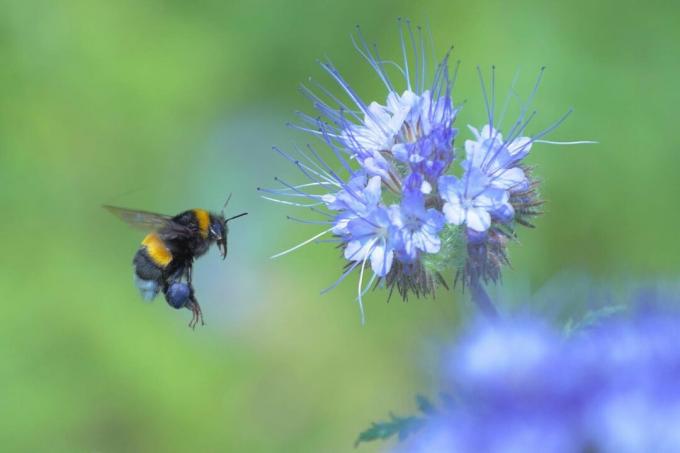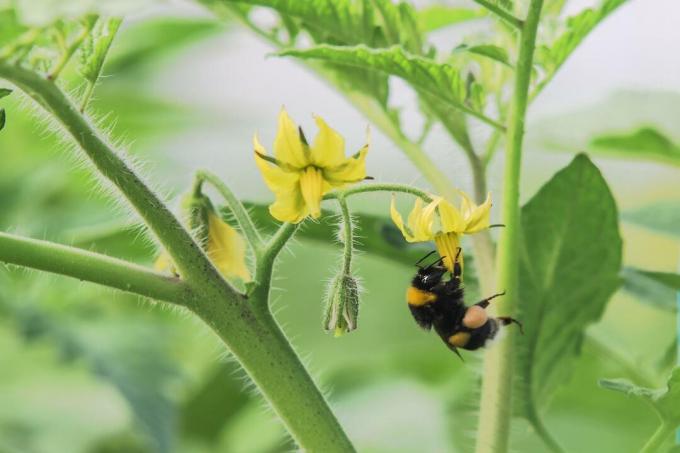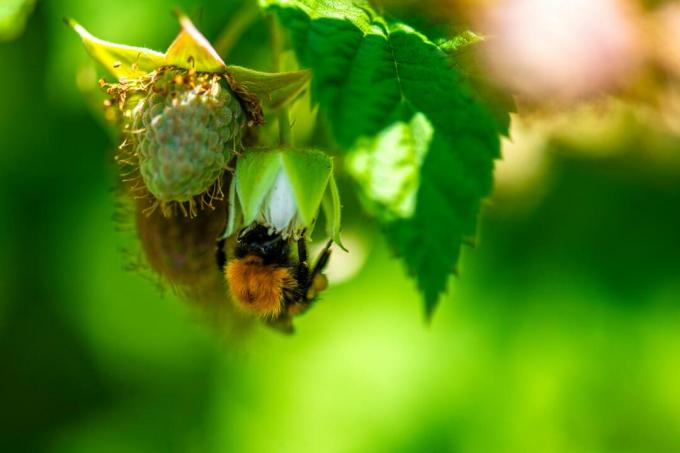In addition to bees, bumblebees are also very important for the pollination of our plants. Here we tell you how to create a bumblebee-friendly garden and attract the little buggers.

With their furry and spherical appearance, they belong bumblebees (bomb) probably one of the most lovable beneficial insects in our garden. Unfortunately, the fluffy insects are overshadowed by their better-known relatives, the bee. But although bumblebees cannot be used for honey production and receive less attention from us humans, they are indispensable for the garden. Unfortunately, many bumblebee species are now endangered and are in danger of disappearing from Germany altogether. It is therefore particularly important to support the chubby beneficial insects with a bumblebee-friendly garden. Here you can find out why bumblebees are so important and how you can attract bumblebees to your garden.
Why should you attract bumblebees to your garden?
A total of 41 bumblebee species live in Germany and fulfill an important task here: Like yours Relatives, the bee, the bumblebee is one of the pollinators that enable the reproduction of many plants to ensure. The bumblebee is of particular value for gardeners in particular: With its furry coat and massive body, it pollinates many useful plants such as strawberries (Fragaria) and tomatoes (Solanum lycopersicum) often better than bees, so the fruits grow larger and more evenly. For this reason, farms that grow their plants in greenhouses are increasingly using bumblebee colonies as pollinators.

In addition, bumblebees can fly at temperatures as low as 3 °C and also in bad weather such as drizzle (in contrast to the honey bee, which starts collecting at least 12 °C and prefers to stay in its hive in wet and humid weather remains). This makes them one of the most important pollinators, especially for early flowering plants.
attract bumblebees
Bumblebees can be of great use in the garden as pollinators and even increase the yield of individual plants. But how do you attract bumblebees into the garden? We have put together the best tips on how to introduce bumblebees to your garden.
Make the garden bumblebee-friendly
The best way to attract bumblebees is to make the garden as bumblebee-friendly as possible. This includes, above all, the renunciation of pesticides and mineral fertilizers, as these often also have a harmful effect on pollinators or displace the wild plants that are important for bumblebees. In addition, the preservation of natural habitats for bumblebees is of particular importance: Wild corners in the garden with piles of leaves, unmown lawns or even one wildflower meadow are ideal as a retreat for the small animals. Also one Dry stone wall in the garden is ideal as a shelter for many bumblebee species and can also be easily and stylishly integrated into the garden design.

Basically, the more diverse the garden, the more bumblebee-friendly it is. A wide range of different bumblebee friendly plants, different nesting possibilities and natural places ensure that bumblebees feel at home in the garden. If you want to give your bumblebees additional support, you can offer another possible nesting place with a bumblebee nesting box. These are well accepted, especially in smaller gardens where the number of suitable nesting places for bumblebees is limited. You can find out which nesting aids are suitable for bumblebees and how to proceed with construction and installation in our article "Bumblebee Nesting Box: Buy or build a bumblebee hotel yourself“.
Bumblebee friendly balcony
Gardeners who only have a small garden or even a balcony often do not know how to attract bumblebees. In fact, you can also design small areas in such a way that bumblebees feel right at home. A bumblebee-friendly balcony impresses above all with its diverse planting: Bee-friendly balcony plants are not only easy to cultivate in a small space, but are also beneficial for bumblebees. Above all, you should ensure that there is a regular supply of food, which can be achieved by planting early, medium and, above all, late flowering species.

Sparsely planted boxes with soil and a few stones not only serve as a source of food, but are also used by some bumblebee species as nesting sites. There is also a place for a bumblebee nesting box on every balcony and the bumblebees are often happy to accept it.
Bumblebee friendly plants
Plants are the be-all and end-all if you want to attract bumblebees. Bumblebee friendly flowers like this snapdragons (Anthirrhinum majus) are just as popular as cultivated plants such as raspberry (Rubus idaeus) or pea (Pisum sativum). Of course, wild plants such as dandelion (Taraxacum) should not be missing in a bumblebee-friendly garden.

However, it is particularly important when selecting the plants to pay attention to their different flowering times. Since bumblebees only hibernate for a short time, they are dependent on plants that bloom particularly early, but also on flowers that only blossom in late autumn. A sufficient diversity of flowering times is therefore particularly important. Seed mixtures such as the Plantura bee pasture Proven: By using different bumblebee-friendly plants that have different flowering times own, the seed mixture ensures that the bumblebees have a suitable forage plant at any time of the year Find. You can find out which flowers are also suitable for bumblebees in our article "Bumblebee-friendly plants: our top 10 for your garden“.
You don't just want to welcome the bumblebee, but all insects in your garden? Read ours here Tips for insect-friendly garden design.
